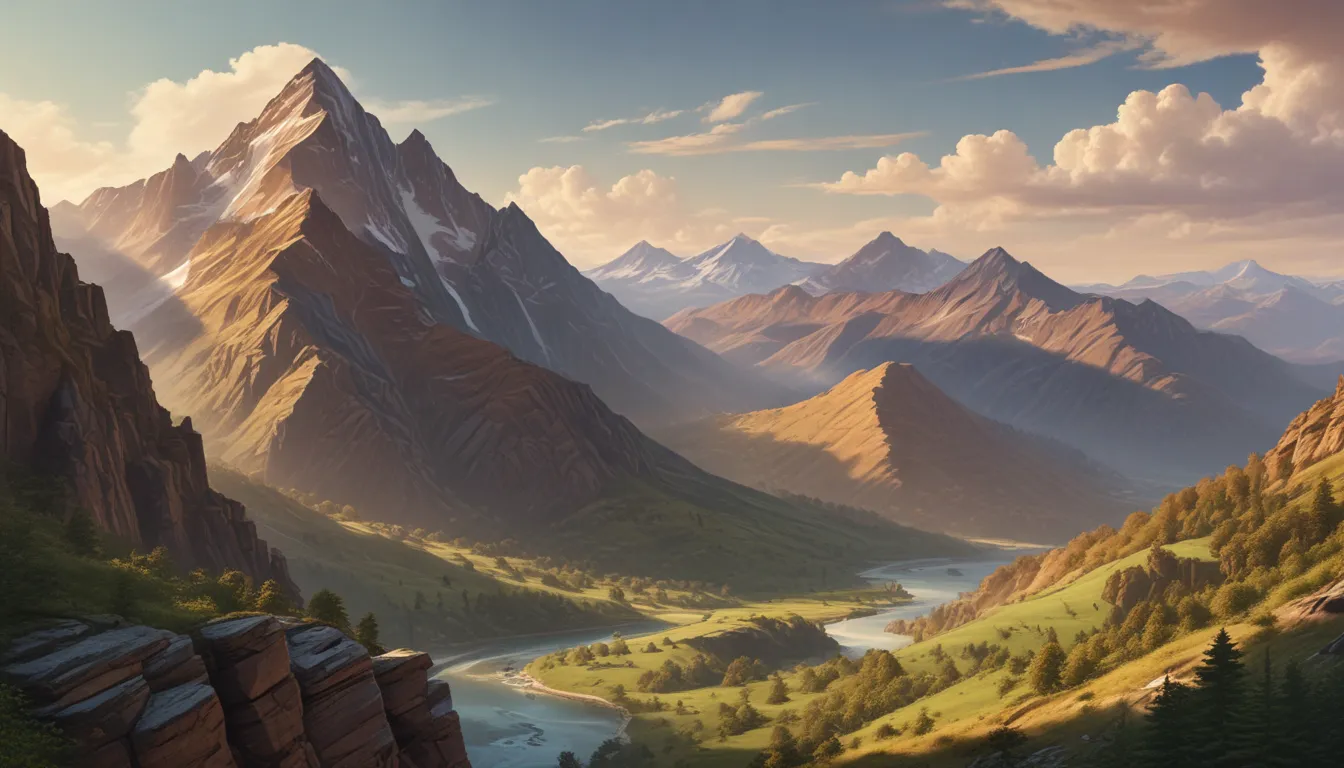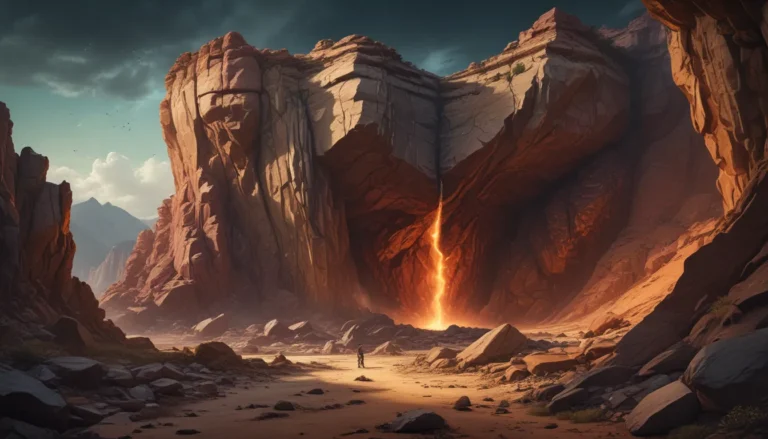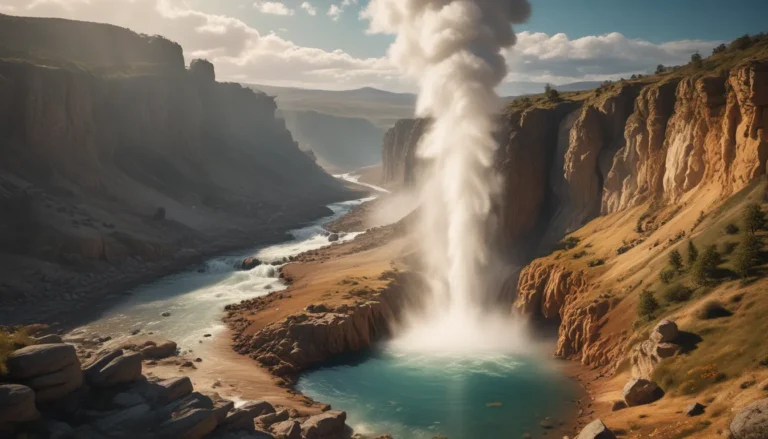A Note About Images: The images used in our articles are for illustration purposes only and may not exactly match the content. They are meant to engage readers, but the text should be relied upon for accurate information.
Have you ever gazed upon the towering peaks of fold mountains and marveled at the forces that shaped them? These majestic geological formations, born from the collision of tectonic plates, hold within them a world of wonders waiting to be discovered. From the highest peaks to the diverse ecosystems they harbor, fold mountains offer insights into the intricate processes that have sculpted our planet over millions of years.
Join us on a journey through 17 surprising facts about fold mountains, as we unravel the mysteries of these breathtaking landscapes and explore their significance in shaping our world. From their formation and impact on climate patterns to the rich mineral deposits they hold, there is so much to learn and appreciate about these geological marvels.
Unveiling the Secrets of Fold Mountains
Fold Mountains: Nature’s Masterpiece
At the core of every fold mountain lies a story of immense geological forces at play. These stunning formations are the result of tectonic plate movements, where rocks are compressed, folded, and uplifted over millennia. From the Himalayas in Asia to the Andes in South America, fold mountains grace every continent with their awe-inspiring presence, showcasing the beauty and diversity of our planet’s landscapes.
The Majesty of Fold Mountains
-
Formed through Tectonic Plate Movement: The collision of tectonic plates gives birth to fold mountains, as immense pressure and friction cause rocks to fold and buckle, creating these majestic landscapes.
-
Global Presence: From the heights of Mount Everest in the Himalayas to the rugged ranges of the Andes, fold mountains can be found on every continent, each with its unique charm and beauty.
-
Highest Peaks: Mount Everest, the tallest mountain on Earth, calls the Himalayas home, along with other towering peaks like K2 and Makalu, showcasing the grandeur of fold mountains.
-
Expansive Ranges: Stretching for thousands of kilometers, fold mountain ranges like the Appalachian Mountains in the United States and the Great Dividing Range in Australia showcase the vast scale of these geological wonders.
-
Ever-Changing Landscapes: Constantly evolving through processes like erosion and volcanic activity, fold mountains are dynamic landscapes that continue to shape and transform over time.
The Impact and Significance of Fold Mountains
-
Mineral Wealth: The folding of rocks in fold mountain formation often leads to the creation of valuable mineral deposits, such as gold, silver, and copper, contributing to the Earth’s resource diversity.
-
Ecosystem Diversity: Home to a rich variety of flora and fauna, fold mountains harbor unique and endemic species, contributing to the planet’s overall biodiversity.
-
Outdoor Adventure: A magnet for outdoor enthusiasts, fold mountains offer endless opportunities for activities like mountaineering, hiking, skiing, and rock climbing, inviting adventurers to conquer their heights.
-
Climate Influence: By affecting weather patterns and creating microclimates, fold mountains play a crucial role in shaping regional climates and influencing rainfall patterns.
Unveiling the Intricacies of Fold Mountains
-
Rugged Beauty: Known for their breathtaking landscapes, fold mountains boast deep valleys, steep cliffs, cascading waterfalls, and serene alpine meadows that captivate the eye and inspire admiration.
-
Water Cycle Catalyst: Acting as natural reservoirs, fold mountains capture and store precipitation, supplying water to rivers and streams that sustain ecosystems and communities.
-
Seismic Activity: The formation of fold mountains can trigger earthquakes, as the immense forces involved lead to the build-up of stress within the Earth’s crust.
-
Historical Significance: Once as tall as the Himalayas, the eroded Appalachian Mountains serve as a testament to the ancient origins of fold mountain ranges on our planet.
-
Weather Patterns: By blocking or redirecting winds, fold mountains influence weather conditions and create unique weather phenomena in the regions surrounding them.
-
Millions of Years in the Making: The intricate process of tectonic plate movement and rock folding unfolds over millions of years, shaping the landscapes we marvel at today.
Inspiring Creations of Fold Mountains
-
Artistic Inspiration: Throughout history, fold mountains have stirred the imaginations of artists, writers, and poets, serving as a muse for countless creative works that celebrate their majestic beauty.
-
Continued Wonder: With each fold mountain range, there is a story waiting to be told, a journey waiting to be taken, and a marvel waiting to be uncovered, beckoning all who appreciate the wonders of our Earth.
In conclusion, fold mountains stand as testaments to the awe-inspiring power of geological forces that have shaped our planet over millennia. From their formation through tectonic plate movements to their role in influencing climate patterns and supporting diverse ecosystems, fold mountains offer a glimpse into the grandeur and complexity of the natural world. Whether you seek adventure, admire nature’s beauty, or simply crave knowledge, exploring fold mountains will leave you in admiration of the remarkable processes that have shaped our world.
So, the next time you find yourself surrounded by the towering peaks of fold mountains, take a moment to appreciate the incredible forces that crafted them and the wonders they hold within their rocky embrace.
FAQs: Unveiling More about Fold Mountains
Q: How are fold mountains formed?
A: Fold mountains are formed by the collision of tectonic plates, causing the Earth’s crust to buckle and fold upwards, creating majestic mountain ranges.
Q: What is the highest fold mountain in the world?
A: Mount Everest, towering at 29,029 feet (8,848 meters) above sea level, holds the title of the highest fold mountain on Earth.
Q: Do fold mountains only exist on land?
A: No, fold mountains can also be found on the ocean floor, where underwater fold mountains, known as oceanic fold belts, shape the seabed.
Q: How do fold mountains contribute to biodiversity?
A: Fold mountains create diverse habitats with varying climates, fostering a wide range of flora and fauna that contributes to high biodiversity within these regions.
Q: Can fold mountains affect weather patterns?
A: Yes, fold mountains have a significant impact on local weather patterns by influencing wind patterns, creating microclimates, and affecting precipitation in surrounding areas.
In your quest to understand the intricate workings of our planet, delve into the world of fold mountains, where every peak, every valley, and every fold tells a story of Earth’s enduring metamorphosis. Embrace the wonder, appreciate the beauty, and treasure the insights that these geological marvels offer, for in their rugged landscapes lies a tapestry woven by the hands of time itself.






